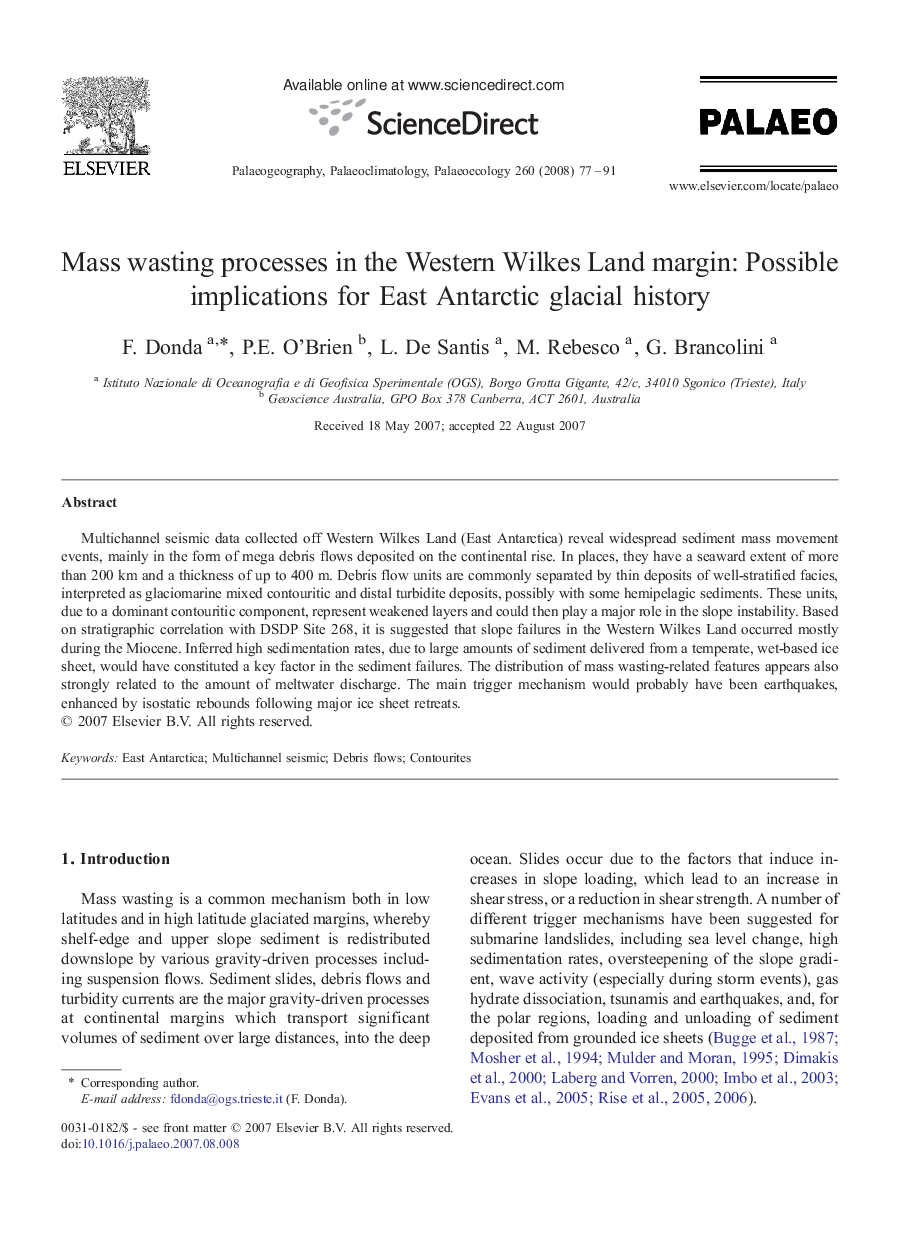| Article ID | Journal | Published Year | Pages | File Type |
|---|---|---|---|---|
| 4468610 | Palaeogeography, Palaeoclimatology, Palaeoecology | 2008 | 15 Pages |
Multichannel seismic data collected off Western Wilkes Land (East Antarctica) reveal widespread sediment mass movement events, mainly in the form of mega debris flows deposited on the continental rise. In places, they have a seaward extent of more than 200 km and a thickness of up to 400 m. Debris flow units are commonly separated by thin deposits of well-stratified facies, interpreted as glaciomarine mixed contouritic and distal turbidite deposits, possibly with some hemipelagic sediments. These units, due to a dominant contouritic component, represent weakened layers and could then play a major role in the slope instability. Based on stratigraphic correlation with DSDP Site 268, it is suggested that slope failures in the Western Wilkes Land occurred mostly during the Miocene. Inferred high sedimentation rates, due to large amounts of sediment delivered from a temperate, wet-based ice sheet, would have constituted a key factor in the sediment failures. The distribution of mass wasting-related features appears also strongly related to the amount of meltwater discharge. The main trigger mechanism would probably have been earthquakes, enhanced by isostatic rebounds following major ice sheet retreats.
